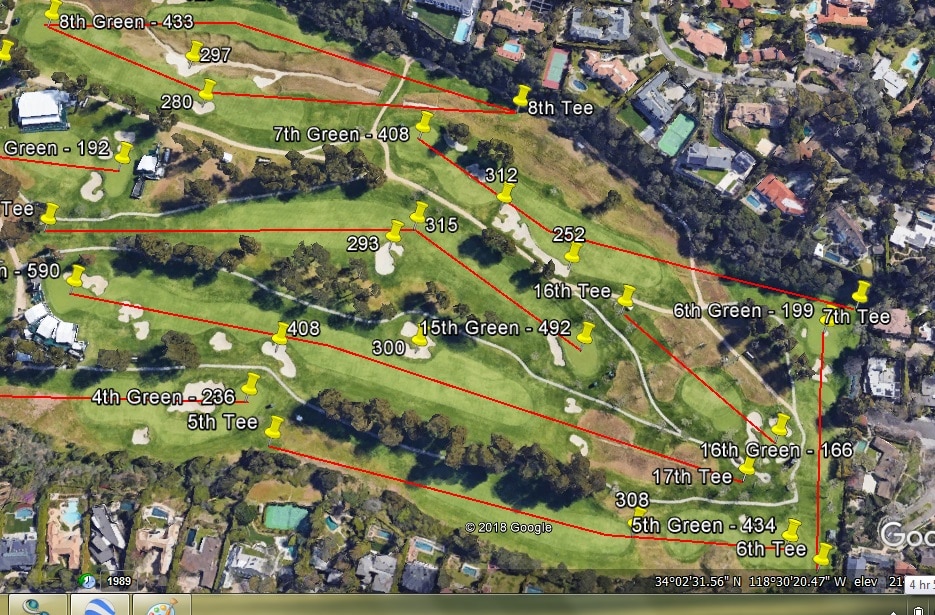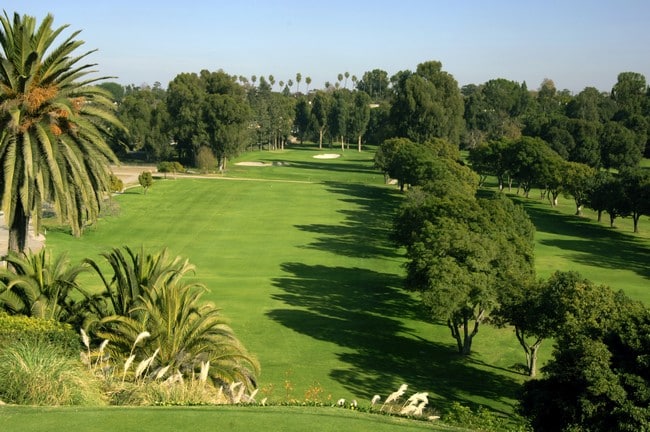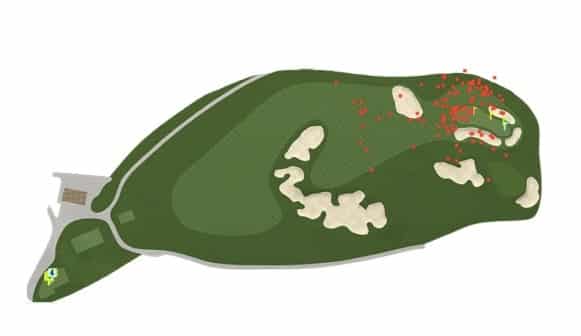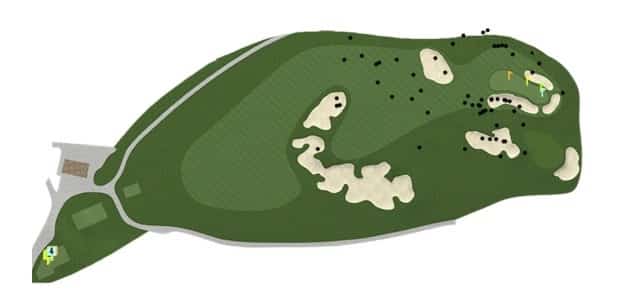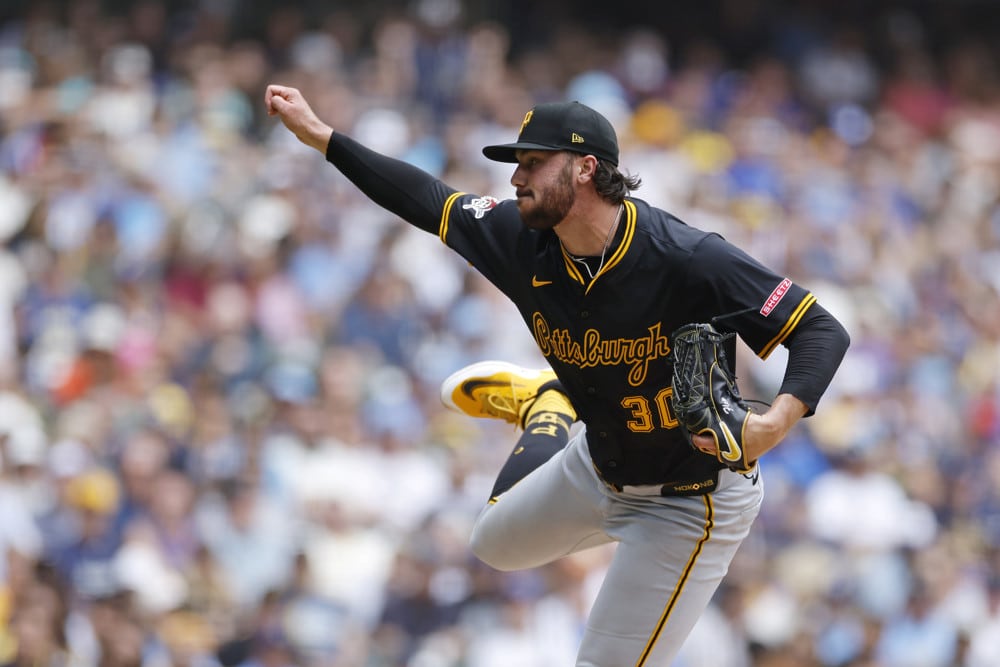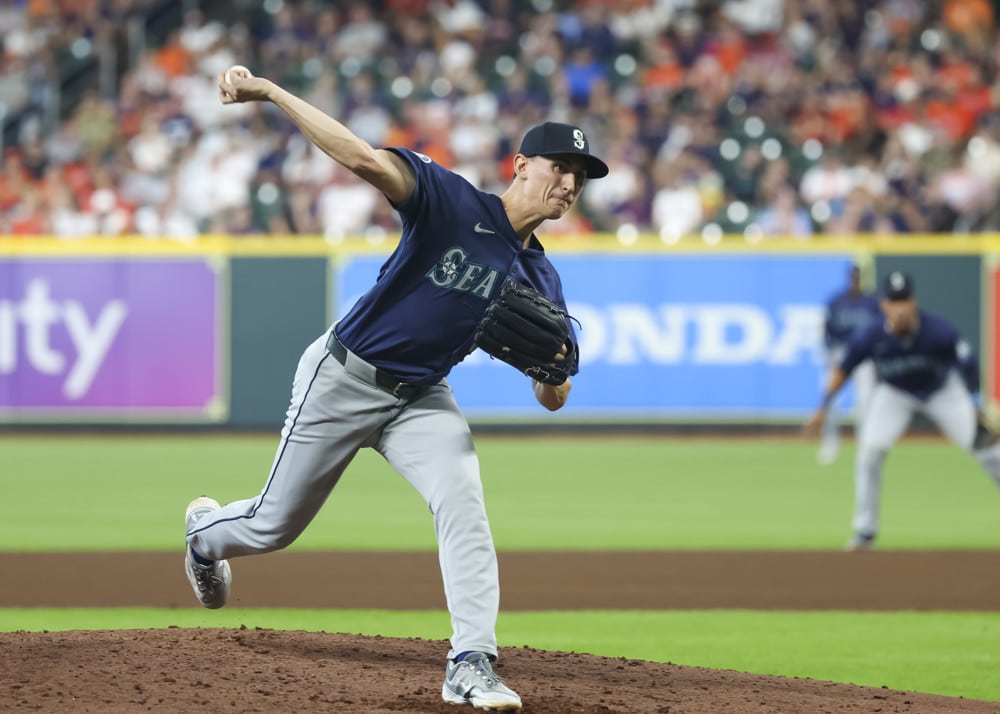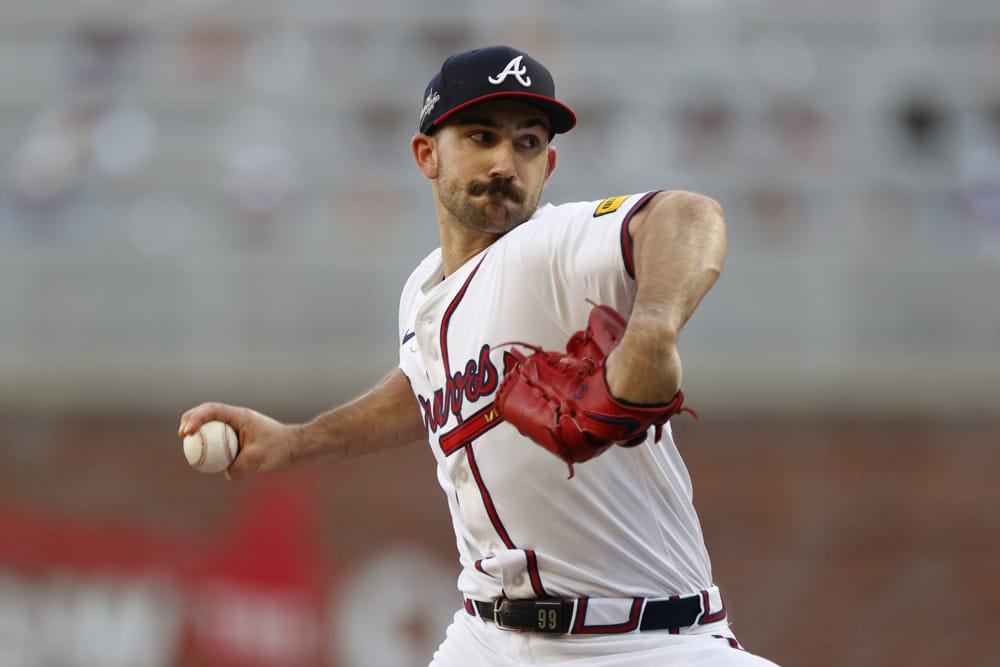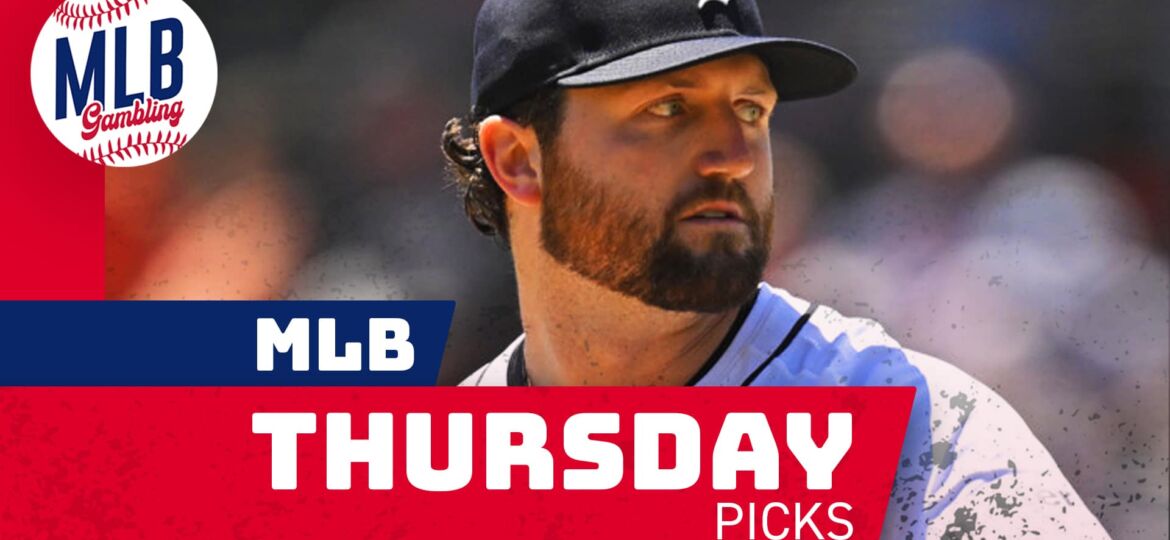A week after the PGA Tour visited one of the most historic golf communities in America, the action moves to yet another legendary golf course as a stacked field tees it up for the 2020 Genesis Invitational at Riviera Country Club in Los Angeles, California.
Riviera Country Club literally is a golf time capsule, as the course has seen very little alterations to its layout since it opened in 1927. Given the combination of a great golf course and its location in the second largest metropolitan area in the United States, the event annually attracts one of the best fields outside the major championships and the WGC’s. There are plenty of opportunities for the world’s best to be in the spotlight both on and off the course this week.
Here’s a primer of everything to know before placing bets on the final event of the West Coast swing.
The Field
Up until this year, this tournament had an open format with local qualifiers competing on the Monday of tournament week for a spot in the 144 player field. Starting in 2020, however, the PGA Tour elevated this tournament’s status to a 120 player field invitational and increased the available purse to $9.3 million. It now has a similar standing on the PGA Tour to the Arnold Palmer Invitational and the Memorial. Instead of the customary two year PGA Tour exemption for anyone who wins an event, the winner this year has an automatic exemption for three years. In addition, the TGR Foundation becomes the primary charity of the tournament and their philanthropic work will become amplified on the broadcast.
And speaking of the #GOAT, Tiger Woods is the highlight of the field and is the official host of this week’s Genesis Invitational. Tiger Woods hails from Southern California and regularly played in the event early in his career, but after withdrawing from the event in 2006 he didn’t make his return to Riviera until 2018. It also is one of the few golf courses on the PGA Tour he has yet to win at. Tiger’s form going back to last October has been tremendous, and after a strong showing at Torrey Pines he could finally put a win at Riviera onto his illustrious resume.
The rest of the notables in this field are highly decorated. They include past Riviera champions Dustin Johnson, Phil Mickelson, Bubba Watson and Adam Scott, all of whom seek to add another title at the country club to their mantle. Other notables in the field are Rory McIlroy, Brooks Koepka, Jon Rahm, Justin Thomas, Justin Rose, Patrick Cantlay, Xander Schauffele, Paul Casey, Jason Day, Bryson DeChambeau, Tony Finau, Sergio Garcia, Matt Kuchar, Marc Leishman, Hideki Matsuyama, Patrick Reed and Jordan Spieth. A field of absolute who’s who and almost guarantees an interesting and exciting leaderboard on Sunday.
For the full field, click here.
The Golf Course
Construction on Riviera Country Club began in 1926 by George C. Thomas in a barren canyon in Santa Monica. After consulting with the great Alister McKenzie, Thomas finalized his architecture plans and the golf course was completed the following year. It was the site of the first Los Angeles Open in 1929 and was the primary home of the tournament for the better part of seven decades, occasionally sharing duties with other golf courses in the area. Beginning in 1999, the tournament made Riviera its permanent home and has hosted it through several name changes ever since. Riviera also has hosted the 1948 U.S. Open, the 1983 and 1995 PGA Championship and the 2017 U.S. Amateur.
The golf course itself has been relatively unaltered since its opening. Other than bunker renovations in the 1990’s by Bill Coore and Ben Crenshaw (most notably at the 10th hole) and a restoration of the 8th hole by Tom Fazio, Riviera is an old soul that still packs a punch. It tests the best in the world despite decades of technological advancement in golf balls and clubs:
Besides the creative and unique layout, Riviera features a type of grass that the PGA Tour doesn’t see very often on the schedule. In 1934 after a bad New Year’s Eve storm damaged most of the golf course, Riviera was re-sodded with kikuyugrass – a sticky, spongy turf native to Africa. Unlike bermudagrass, kikuyugrass does not go dormant during colder months and shows best in climates with constant sunshine like Los Angeles enjoys throughout the year. The combination of the hard, moisture deprived soil that lays a foundation of the golf course to the grabby nature of the kikuyu plays in perfect harmony with each other. It creates a track of lush fairways and tricky rough that can pose problems for anyone not used to hitting off of it.
The design of almost every hole at Riviera is a favorite to the golf architecture community, and Andy Johnson (a.k.a. the Fried Egg) wrote a hole by hole brekdown covering just that subject. To me, three holes on the golf course really stand out:
Hole #1
The 503 yard Par 5 1st hole offers up one of the best opening tee shots in golf. With the historic Riviera Club House in the shadows, golfers tee off to a 30 yard wide fairway 60 feet below them. For most amateurs, the barranca rough that cuts across the fairway about 330 yards out won’t be in play. But most professionals can easily carry their tee shot 300 yards in the air, and if you give them a helping breeze from an elevated tee position they can easily bounce their opening shot into that rough. Most professionals will likely pull a fairway metal or a driving iron to lay short of the barranca and set up a very manageable second to get their round off to a great start.
Hole #8
This hole was redesigned by Tom Fazio in an attempt to bring it back to the original design of George Thomas. With dueling fairways, golfers have two options – hit it down the right onto a narrow fairway, or take it down the left to a slightly more generous one but contend with two fairway bunkers in the landing zone. While the intent was to make a line down the left fairway more risk-reward, both the advancement in golf technology and the construction of the green has rendered this point moot. For one, most golfers have plenty of carry on their drives to navigate around the fairway bunkers down the left fairway. Also, because of the back to front sloping of the green and the lack of any greenside hazards to contend with, there really isn’t much of a difference between opting for the “safer” right fairway or the “riskier” left fairway. It’s a hole likely better conceptualized than actually executed.
Hole #10
Now THIS is a proper risk-reward hole – a drivable 315 yard Par 4 featuring heavy bunkering and a lightning fast, narrow tabletop green that slopes towards the front bunker. It’s a hole where one round a golfer can easily make birdie and the next they go bunker to bunker to bunker and card a triple.
The $1,000,000 question of the hole is if it’s better to lay up short of the bunker 265 yards out and pitch up with an optimal angle to the green, or navigate around the fairway and greenside bunkers and go for it. In 2018, Golf Week analyzed every birdie or better score and every bogey or worse score on the 10th during the 2017 Genesis Open and compared to shotlink data to see whether it was better to lay up or go for the green:
Birdies or Better
Bogeys or Worse
Based on the data from that tournament, there was about as much of a chance one would walk off the 10th with a birdie or a bogey or worse by laying up. As for those who went for the green, as long as the tee shot carried the bunker on the left side of the fairway and settled either left or short of the green the chances of carding a birdie were good. This trend has continued for the last few years and most of the field now goes for the green.
The hole still plays tricky, however, because of the elaborate sloping of the firm narrow green where anyone who ends up in one of the greenside bunkers faces a tall task to get up and down into the hole. Poor Jordan Spieth found out the hard way in 2019 where five of the eight strokes he took on the hole in the final round were spent in one of the greenside bunkers.
Betting Strategies
The golf course is an architectural masterpiece, and often times the golf courses that ought to be hung in the Louvre tests a player’s ability in every aspect of the game. That’s pretty true when looking at past leaderboards and who has ended up inside the Top 20 since 2013. You’ll see good ball strikers, good scramblers, good putters, and golfers who do a little bit of everything well. Looking at past leaderboards (besides identifying horses for courses) don’t really help much to whittle down the field of contenders very well.
There is one thing from past leaderboards that can be useful for identifying players to back this week. Generally longer hitters have an advantage at Riviera than shorter ones. Over the last seven leaderboards of players who finished inside the Top 20 of the tournament their average rank on the PGA Tour that season in driving distance was 70th, with a median ranking of 61st. In comparison, their ranks with driving accuracy that year were on average was 106th with a median ranking of 114th. That doesn’t mean to immediately discriminate against shorter hitters, but if you find yourself in a position to break the tie between two players, favor the longer one.
So at a venue where golfers of all walks of life can do well and a field full of some of the top players in the world, how exactly can gamblers sift between contenders and pretenders? One way is to take a closer look at the relative importance in scoring by area historically at Riviera.
From this graph, there is a clear emphasis in approach play, scrambling and putting than the average PGA Tour stop, with less emphasis on driving accuracy. Overall performance off the tee is put a bit on the backburner in comparison with average PGA Tour stops (with the exception to driving distance as explained above).
This is largely supported when looking at the dispersion between strokes gained and final placement on the leaderboard:
While there is less dispersion in scoring than the average PGA Tour event with approach shots, that is likely attributed to the overall field strength of the tournament and that there are really, really good ball strikers who play Riviera every year. But what stands out in this chart is that there is a much larger dispersion in scoring between those who scrambled and putted well for the week and those who did not. And that’s how a bettor can break ties in this event amongst all the elite talent in the field. When comparing two really good ball strikers focus in on their performance historically around and on the greens as well as the shape it’s in recently. That should point gamblers in the right direction.
In terms of “horses-for-courses”, players in the field with at least 12 career rounds at Riviera who have gained over 1.5 strokes per round on the field are Dustin Johnson, Rory McIlroy, Adam Scott, Carlos Ortiz, J.B. Holmes, Bubba Watson, Hideki Matsuyama, Phil Mickelson, Sergio Garica, Justin Thomas, and Keegan Bradley. Tiger Woods just missed this list with a career 1.49 strokes gained per round at Riviera.
Lastly, the closest correlated golf courses to Riviera in terms of elevating similar skill sets are Kapalua, Augusta National, Nine Bridges, and TPC Summerlin. Players in the field with strong histories across these golf courses include Jason Day, Justin Thomas, Jordan Spieth, Russell Henley, Matt Kuchar, Si Woo Kim, Dustin Johnson, Hideki Matsuyama, and Jon Rahm. That doesn’t mean you have to pick these exact players, but rather these are the molds of players who should theoretically play well at Riviera.





